How to Change a Tyre
Changing a tyre, or more specifically changing a wheel, can seem like a daunting task, particularly if youíve never done it before. However, sometimes itís a necessity to make sure that you can get where you need to be safely.
You should assess your current situation before attempting to change a tyre. Ask yourself the following questions:
- Have I stopped the car in the best place?
- Is it out of the way of other vehicles?
- Am I visible to other drivers?
- Can I safely change the tyre here?
If youíve answered Ďyesí to all of the above, then you should apply the handbrake, put the hazard warning lights on, and place your warning triangle on the road behind your car. Any passengers must get out of the vehicle. These steps are important for everyoneís safety. If youíve answered Ďnoí to any of the above questions, the car may need to be moved to a safer spot.
How to change a car tyre
Before you attempt to remove the flat or defective tyre, you should ensure that you have the correct tools for the job. You donít want to take the old tyre off only to find that you canít reattach the spare. You will need:
- A car jack
- A wrench
- A couple of wheel chocks
- A wheel nut key
- Your car handbook
- A torch (if youíre changing the tyre at night)
If youíre yet to buy a jack, bottle and trolley jacks are reliable and stable options. Scissor jacks are also common, but keep in mind that they are more prone to slipping on uneven surfaces. You should also check that your spare tyre is in good condition. You donít want to fit it only to realise that it isnít safe enough to drive on.
Now you can begin the process of removing the old tyre and attaching the new one.
Step 1: Use the wheel chocks to stabilise the vehicle
Wheel chocks should be put in place to prevent the car from rolling while it is jacked up. They should be positioned diagonally opposite the wheel that is flat. For instance, if the front-left tyre is damaged, the chock should be positioned behind the rear-right tyre. It might also be beneficial to apply one to the rear-left tyre too. If you donít have a chock, bricks or a large plank of wood will work in the same way.
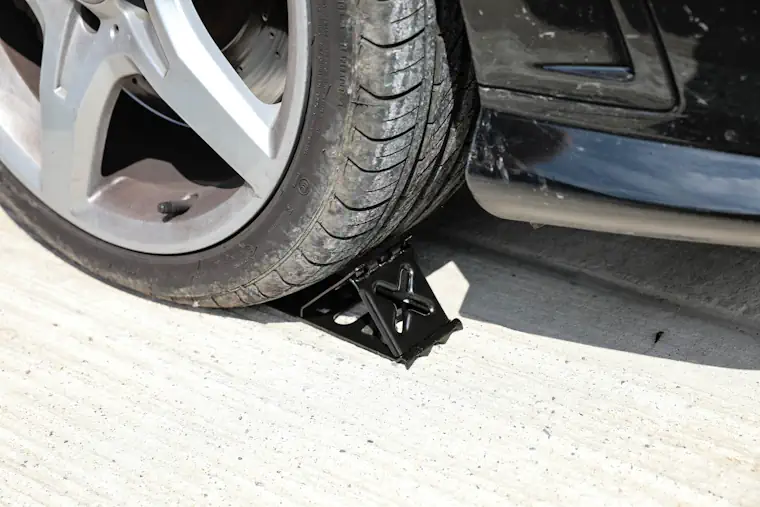
Step 2: Position the car jack
Each car is different, so you may need to refer to your carís handbook to determine the best place to position the jack. If you canít find this information, itís preferable to put it in the lifting point thatís closest to the wheel youíre changing. Check that the head engages properly and extend the jack slowly until the vehicle has risen slightly but the wheels are still on the floor.
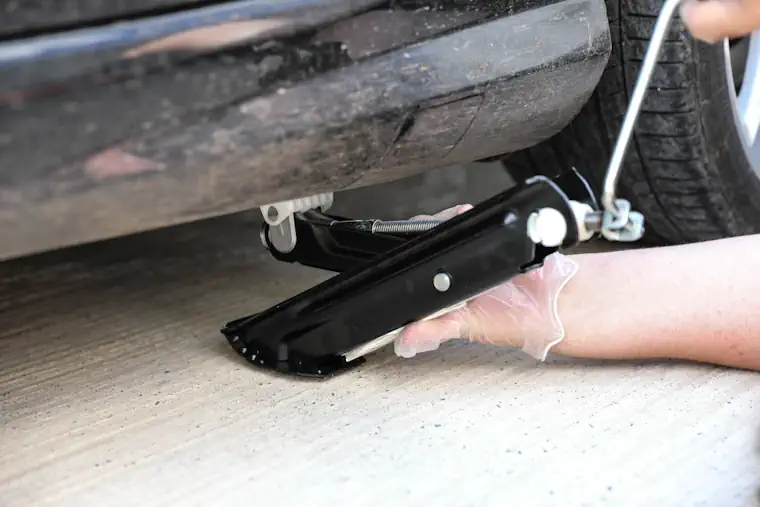
Step 3: Loosen the wheel nuts
Itís safest to loosen the wheel nuts while the tyres are still grounded. This can be done using the wheel wrench. Apply it to the wheel nut and turn the wrench to the left. Remember, lefty loosey, righty tighty - turning most kinds of bolt or screw to the left will loosen it and turning to the right will tighten it. If you can't loosen the nuts by hand, apply pressure to the wrench with your foot. When the nut is loose enough to be removed by hand, keep it in position and move onto the next one. Do not fully remove the nuts yet because it will put pressure on the other ones and make them harder to remove.
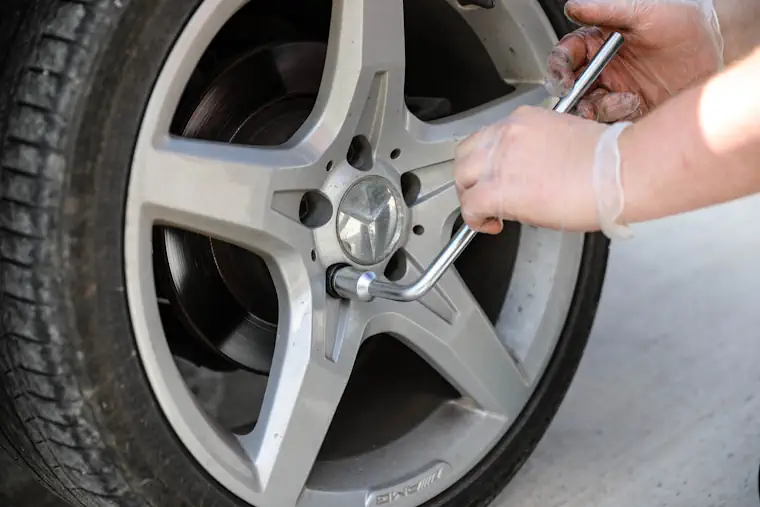
Step 4: Jack the car up
Now that youíve loosened (but not removed) your wheel nuts, you can jack the car up fully. Do this slowly until the vehicle's tyre is around 10cm off the ground. Itís worth mentioning that you should be careful when jacking the car up, ensuring that no part of your body is underneath the vehicle. You should then ensure that the car is stable and the jack doesnít look likely to give out.
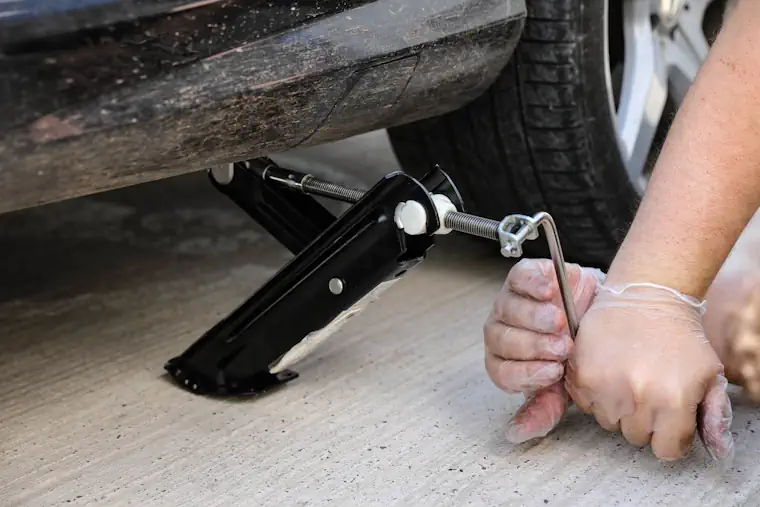
Step 5: Remove the wheel
Remove the wheel nuts by hand, holding the weight of the tyre with your knee so it doesnít fall off and hurt you. Itís a good idea to take the top nut off last. Once this final nut is removed, the wheel should slide out of position. Place it flat on the ground out of your way.
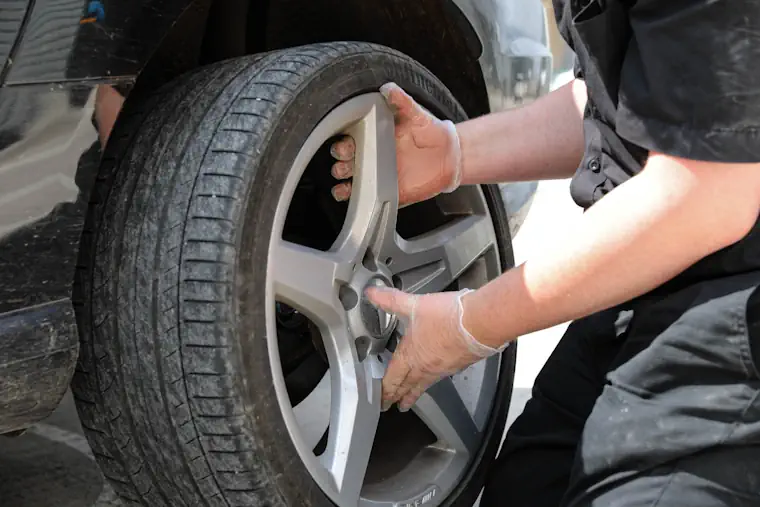
Step 6: Fit the spare wheel
The spare wheel can be fitted by holding it in place and reattaching the wheel nuts. The nuts only need to be secured by hand for the time being, so tighten them until each one can support the weight of the tyre. Once this is done, lower the jack carefully until the wheel is just touching the ground.
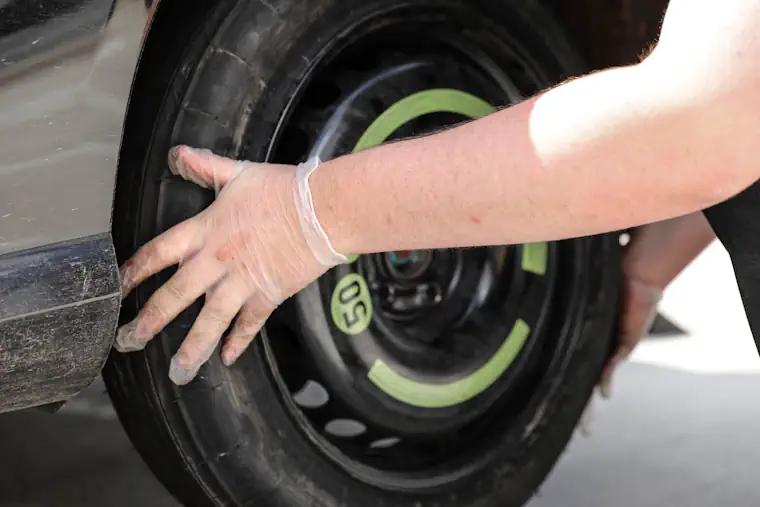
Step 7: Tighten the wheel nuts
The nuts need to be tightened again using the wrench. This time, turn the wrench to the right, making sure that each nut is fully secured.
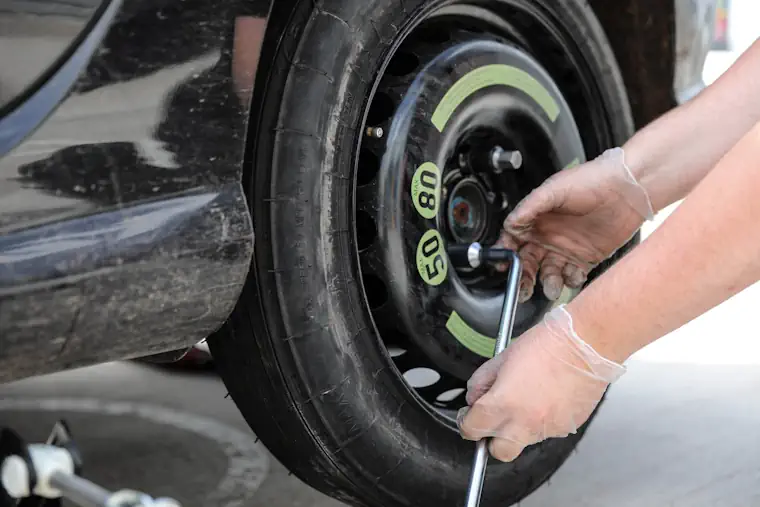
Step 8: Lower the car completely
Itís now safe to slowly lower the car to the ground fully and remove the jack. Once this is done, recheck the nuts to ensure theyíre still tightly secured. If you have a tyre pressure gauge, itís a good idea to test the pressure of the spare tyre. If you donít have one, drive to the nearest garage to check the air.
You should always carry a spare tyre with you just in case anything happens on the roads. Many spare tyres are designed for short distances only, so you should take your vehicle to a repair centre as soon as possible to have the spare swapped for a permanent replacement. We also recommend that you have your tyres changed in pairs, so two new tyres might be required.
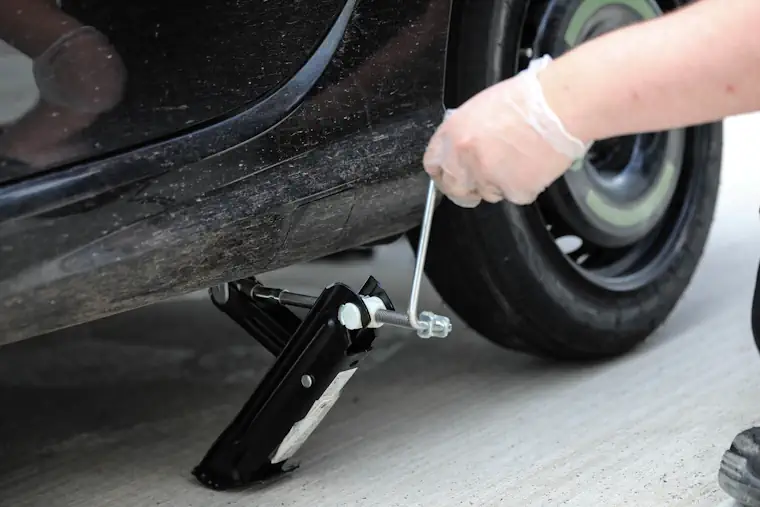
How long does it take to change a tyre?
It should take you around 30 minutes to change a tyre and get back on the road. This time may vary depending on your experience and the weather conditions.
Can you change a tyre on the motorway?
You should never attempt to change a tyre if you feel that the environment is unsafe. You should assess the situation to determine whether you can change the tyre yourself or if you should call a breakdown service to do this for you.
If youíve broken down on the hard shoulder of a busy motorway it is very dangerous to change a tyre, even if you have someone there to keep a lookout. If you find yourself in this situation it is best to stand well back from the road and contact a breakdown service, using an emergency phone if possible.
Donít forget, if youíre ever worried about the condition of your tyres or fear experiencing a blow out, Kwik Fit offers a free tyre check service that could put your mind at ease. Give your local centre a call if you need an assessment or new set of tyres!




